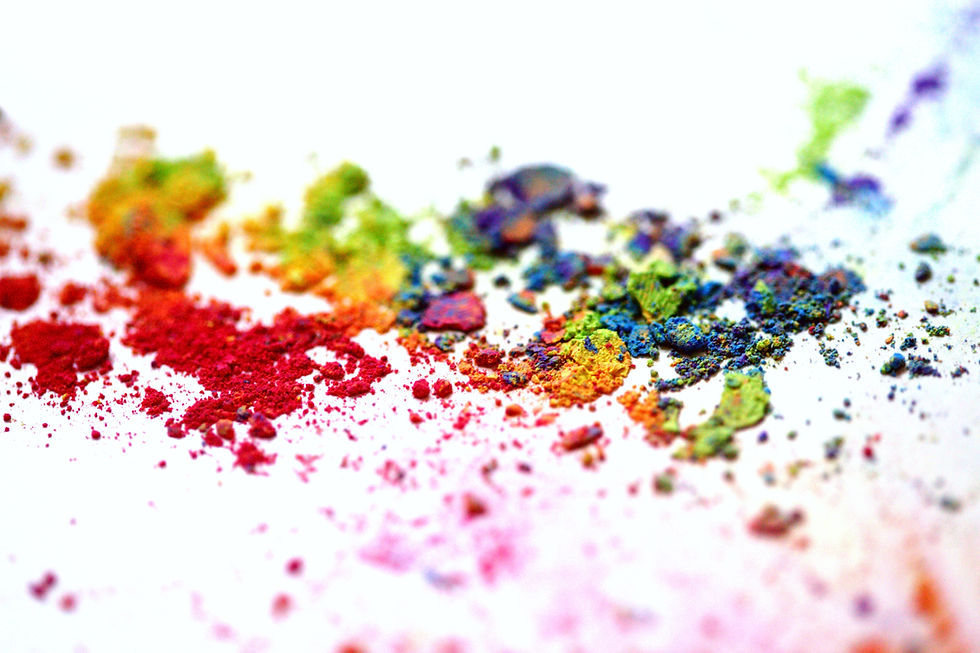Brown, the composite colour of earth, tradition and cosiness.
- Laura Longoni

- Feb 2, 2024
- 4 min read
Updated: Mar 5

In my last post, I talked about the colour orange, which is considered a chromatic colour. Now I would like to dive a little deeper into this colour and talk about one of its special shades: Brown.
Brown is considered a "non-chromatic colour" because it does not belong to the traditional colour wheel, and a "composite colour" because it is created by mixing orange and black in the RYB or CMY(K) colour mixing model. From a certain point of view, one could also say that brown is a shade of orange. In the RGB colour mixing model, on the other hand, which has red, green and blue light as primary colours, it is created by mixing red and green light.
Usually the colour brown is associated to warmth, earth, mud and autumn and its colour variations can range from red brown, yellowish brown to dark brown or light brown.
In this post I will talk about the origin of the colour name itself, its meaning in psychology and symbolism, the most important pigments and shades for art.
Where does the colour name "brown" come from?
The name “brown” derives from the old German words brunaz and brun and, as a basic colour term, it was added to languages after black, white, red, yellow, green, and blue.
What does the colour Brown mean in psychology?
Usually brown is a colour associated to earth, dirt, mud. For this reason it represents, with a negative meaning, unhappiness and poverty. With a positive meaning the colour is associated to the idea of something real, authentic and artisanal. All terms strictly connected to genuineness and tradition. Finally brown can be a colour that can wake up in us the idea of a cosy warmth thinking of a warm cup of coffee or chocolate.
What are the most important brown pigments?
Even though the colour brown is considered a composite colour as a shade of orange, there are pure pigments (earth tones gained from umber, sienna, ochre or cuttlefish ink) that are used to create paints.
Brown pigments are indicated with the letters PBr in The Color of Art Pigment Database.
The oldest pigments are raw umber and burnt umber. Umber, whose name comes from the Italian region Umbria where the material was mined , is a clay made of iron oxide and manganese oxide. Raw umber can vary from greenish brown to dark brown. When burnt the raw umber becomes more reddish and goes under the name burnt umber.
Another clay pigment is raw sienna. The name “Sienna” derives from the city in Tuscany Siena, where the raw material to produce the pigment was mined. Similar to umber it is made of iron oxide and manganese oxide but its colour ranges from yellow ochre to dark brown. When burnt the raw sienna becomes more reddish and goes under the name burnt sienna.
Van Dyck Brown, also known as Cassel Earth and named after the painter Antony van Dyck, was produced using natural pigments until the 20th century. Then, due to its instability, it is now produced using synthetic ingredients or by mixing ivory black with mauve or with Venetian red, or cadmium red with cobalt blue.
The most important pigments used to create brown paints, (which can also come from other hues), are:
PBr6 Iron Oxide Hydroxide Brown
PBr7 Brown Iron Oxide
PY42 Yellow Iron Oxide
PR101 Synthetic Iron Oxide Red
PBk11 Mars Black
PBk9 Bone Black
What are the most common shades of Brown?
As explained in my previous post about "orange", the colour brown is a composite colour that can be obtained by mixing either orange (red+yellow) with black or the three primary colours red, blue and yellow (Here an example).
Some other brown shades are:
Taupe, an orange brown, whose name comes from the French term meaning "mole".
Beige, a greyish yellowish brown, whose name comes from the French word indicating the colour of natural wool. Beige can be also considered a tint of brown and can be obtained by mixing primary colours and white (using different ratios) or through a combination of burnt umber, cadmium yellow medium and white..
Rosy beige, a reddish brown
Maroon (or Chestnut), a brownish crimson colour, whose name comes from the French word "marron" meaning "chestnut".
Final words.
Brown is a very complex und undererstimated colour, with wonderful shades, which is able to awake in us our need for authenticity and coziness. Is brown your favourite colour?
Thank you for reading. If you like the post, leave a like, a comment and don't forget to follow my blog, Instagram and Threads and share the content on your social media.
In my next post I will have a look at the chromatic colour, which is expression of our strongest emotions: red.
Until then I hope you will have a great creative day!
Laura




Comments